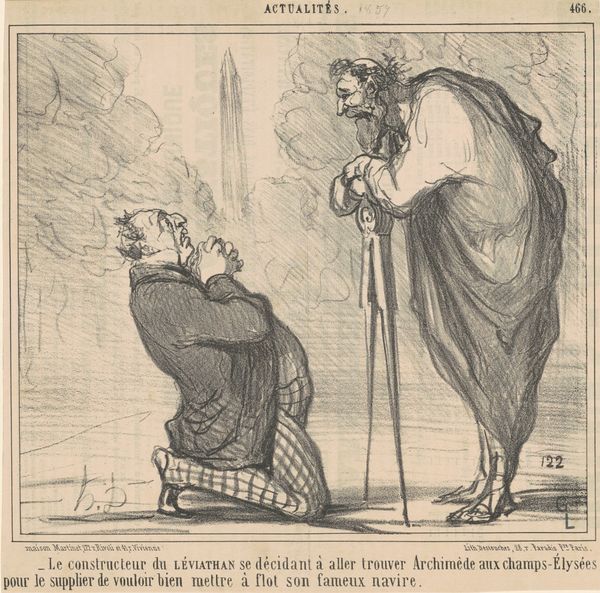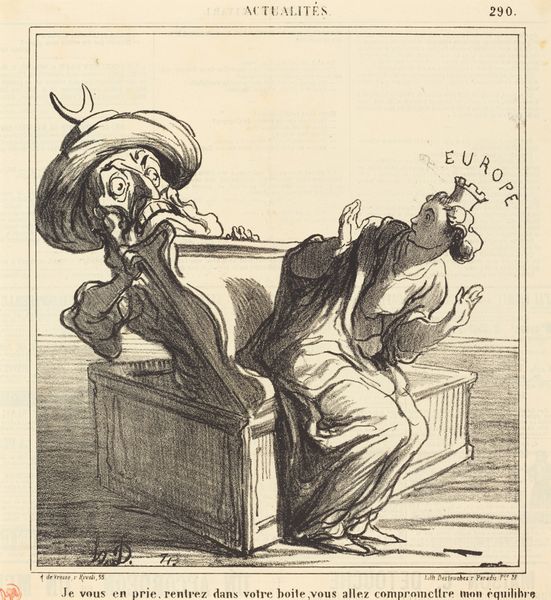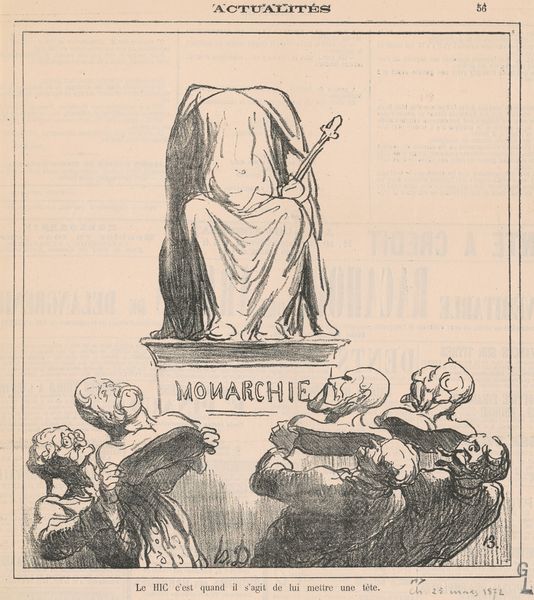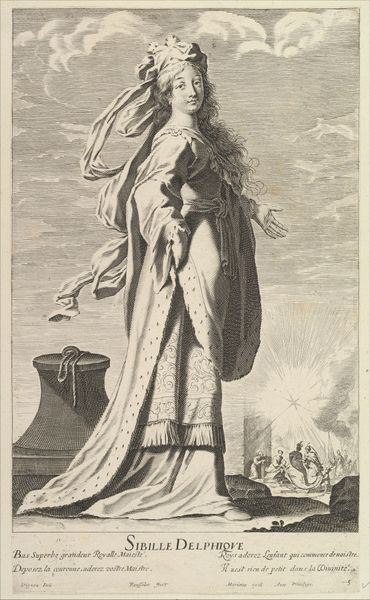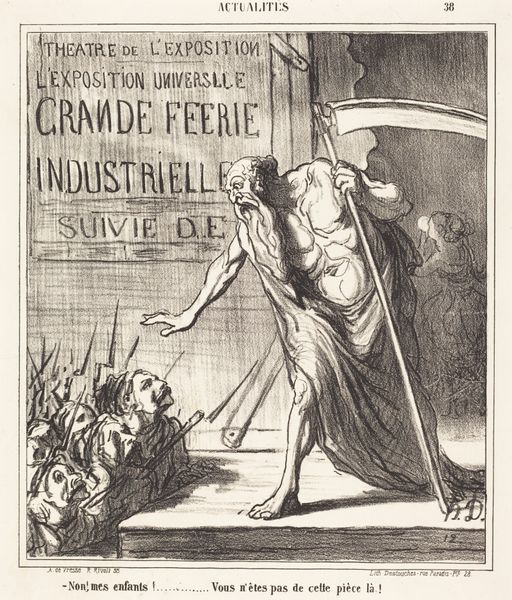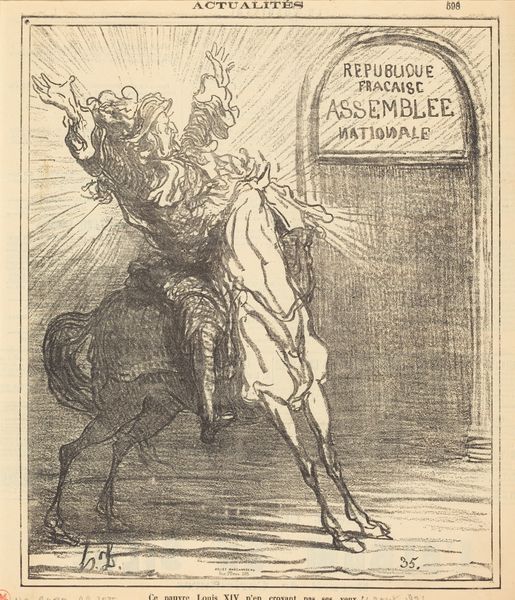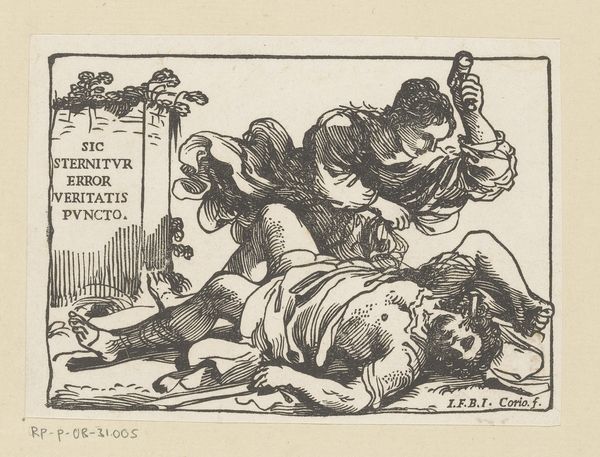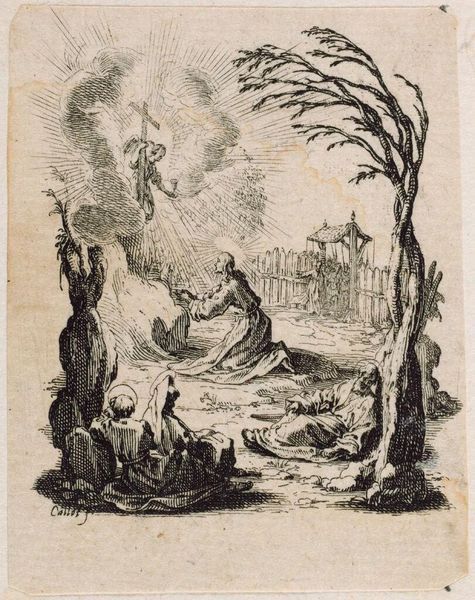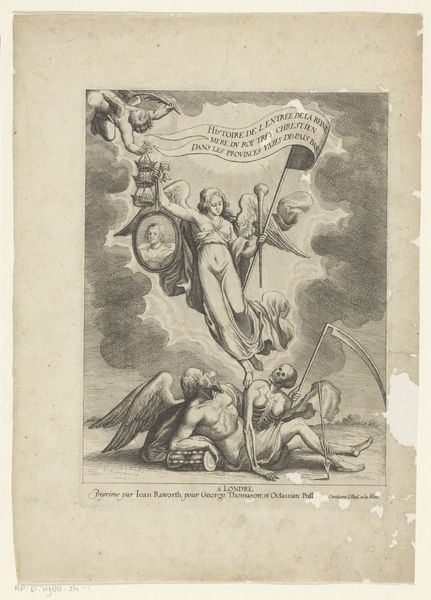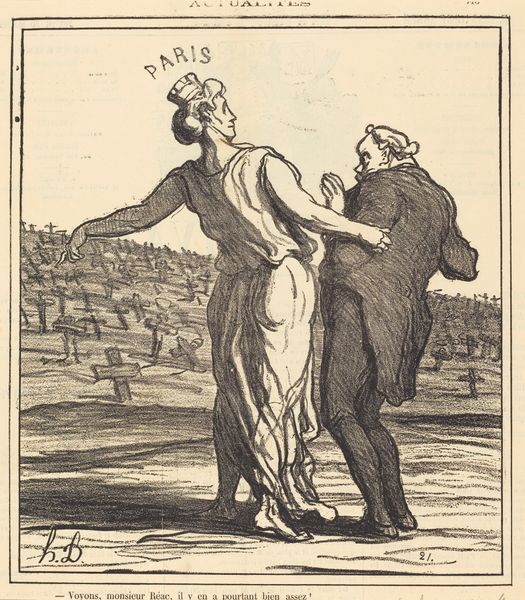
drawing, graphic-art, lithograph, print
#
portrait
#
drawing
#
graphic-art
#
lithograph
# print
#
figuration
#
history-painting
#
realism
Copyright: National Gallery of Art: CC0 1.0
Curator: This lithograph by Honoré Daumier is titled "Le défenseur de Calas consolé de n'avoir pu défendre Bailly, André Chénier et Camille Desmoulins," created in 1871. What’s your initial reaction? Editor: Grim, decidedly grim. There's a towering, spectral figure and in the background, what seems to be a crowd surrounding a guillotine. The whole thing has an ominous, ghostly feel to it. Curator: Yes, Daumier is capturing a very specific moment of cultural and political anxiety in post-Revolutionary France. Notice the figure is identified by the name "Voltaire" inscribed on the statue's pedestal. His gesture of helpless appeal embodies the dashed hopes of the Enlightenment ideals, particularly Voltaire’s own advocacy for justice, confronted by the horrors of the Revolution. The shadow of the guillotine evokes the Reign of Terror and how the revolution devoured its own children. Editor: Exactly, and that’s precisely the social commentary at play here. Daumier uses Voltaire, the embodiment of Enlightenment reason, to comment on the tragic irony of the Revolution. Voltaire advocated for legal reform in the Calas affair and posthumously here seems pained for the innocents not defended or saved, namely Bailly, Chénier, and Desmoulins named below in the work title.. It’s a powerful statement about the limits of reason when confronted with political violence. This wasn't history, but raw feeling. Curator: It’s potent symbolism. Voltaire represents the rational, hopeful ideals, while the guillotine represents their brutal failure. Daumier skillfully uses this visual contrast to evoke a profound sense of disillusionment. Look at the faces in the background – a writhing mass of figures dominated by death, illustrating the psychological torment following the French Revolution. Editor: What’s also compelling is the medium – lithography, typically used for mass dissemination, in this context conveys a sense of widespread disillusionment. He doesn't want us to just consider this scene; he wants the whole nation to see and reflect on it. He is directly critiquing those empowered during the time, echoing those artists like Goya who expressed through dark tones and lines the perils and the gruesome acts associated with war and those that governed them. Curator: Yes, Daumier’s print functions as a somber reminder. His print stands as a testament to art’s power to provoke crucial discussions about politics, legacy, and responsibility. Editor: It serves to remind us that even the most enlightened ideals can be corrupted. That visual paradox and potent critique makes this a piece I won't soon forget.
Comments
No comments
Be the first to comment and join the conversation on the ultimate creative platform.

